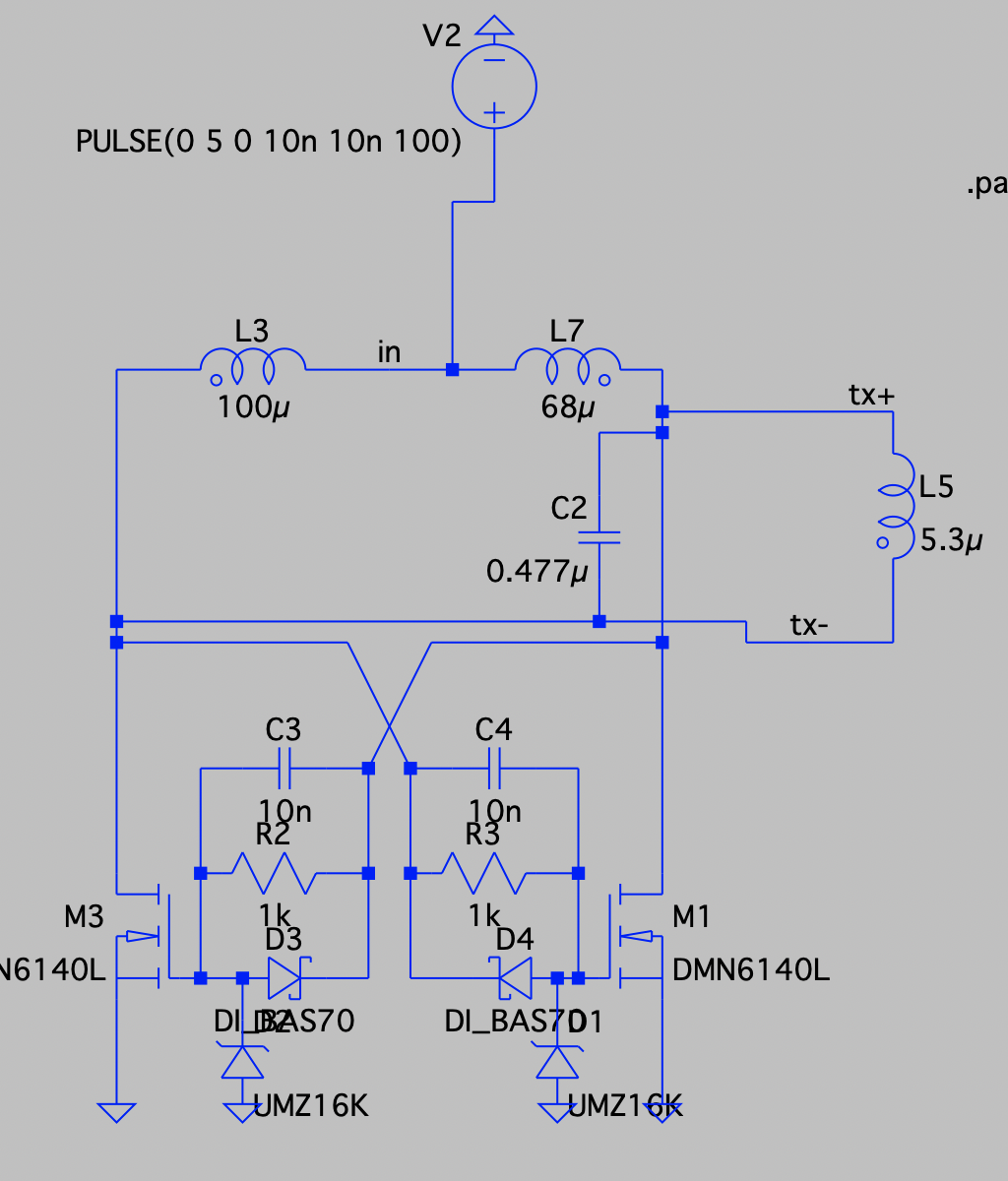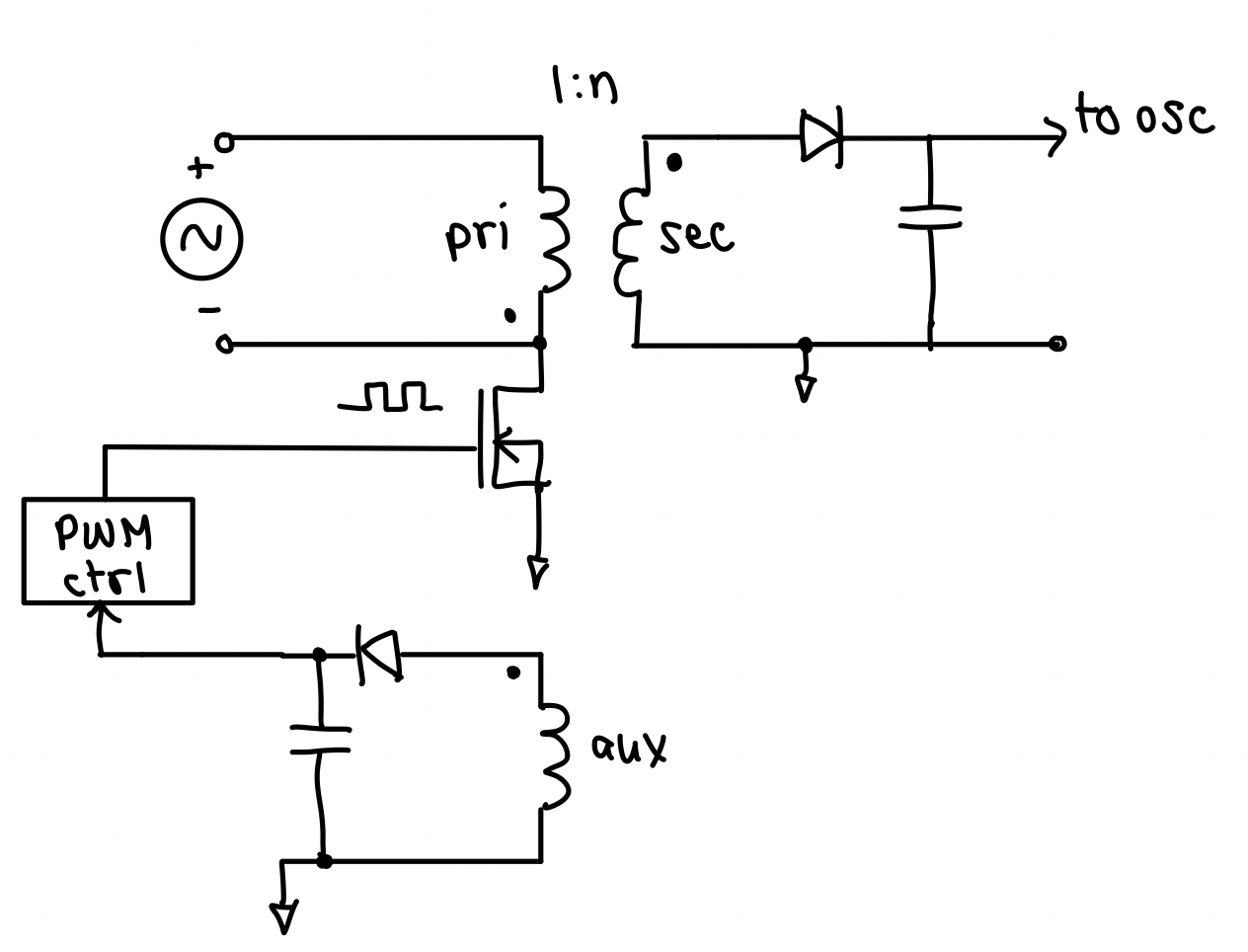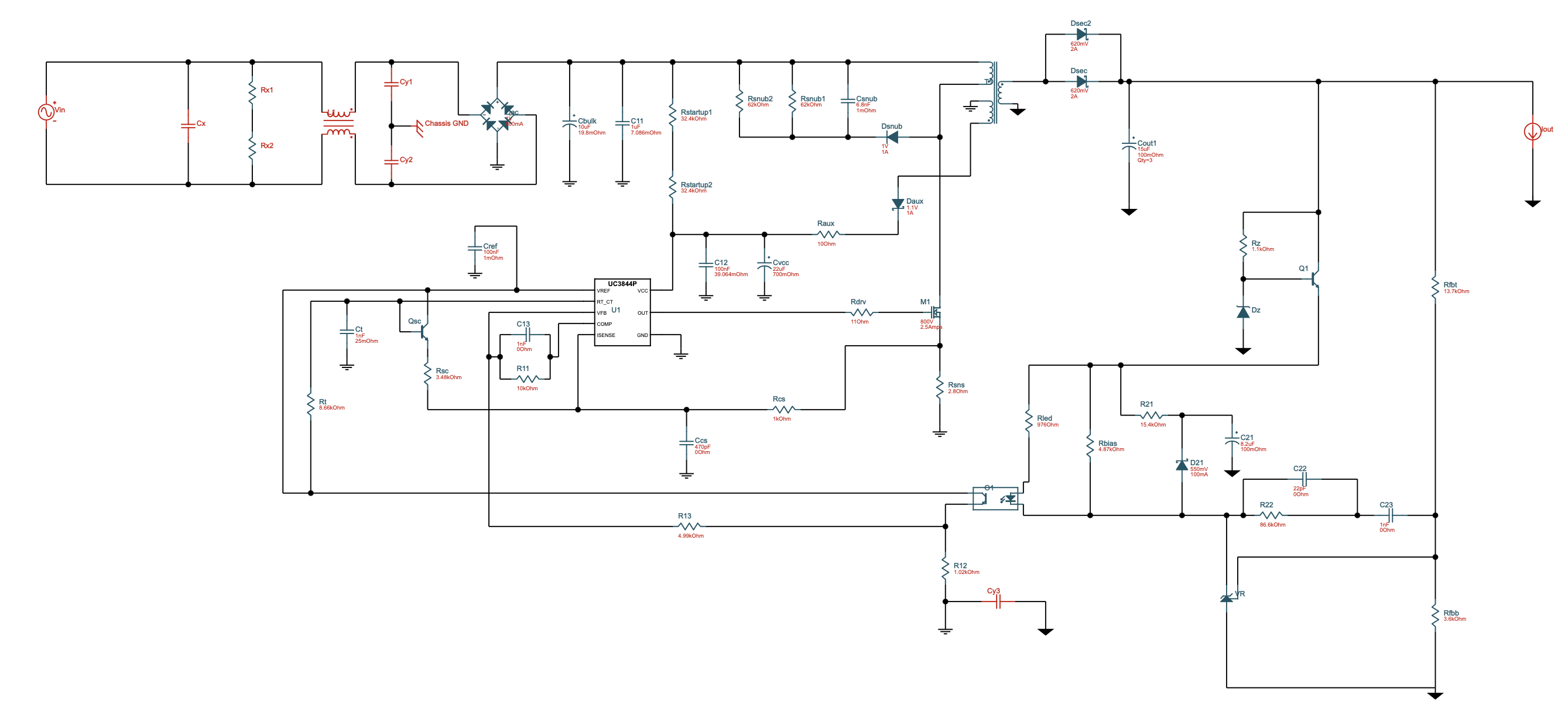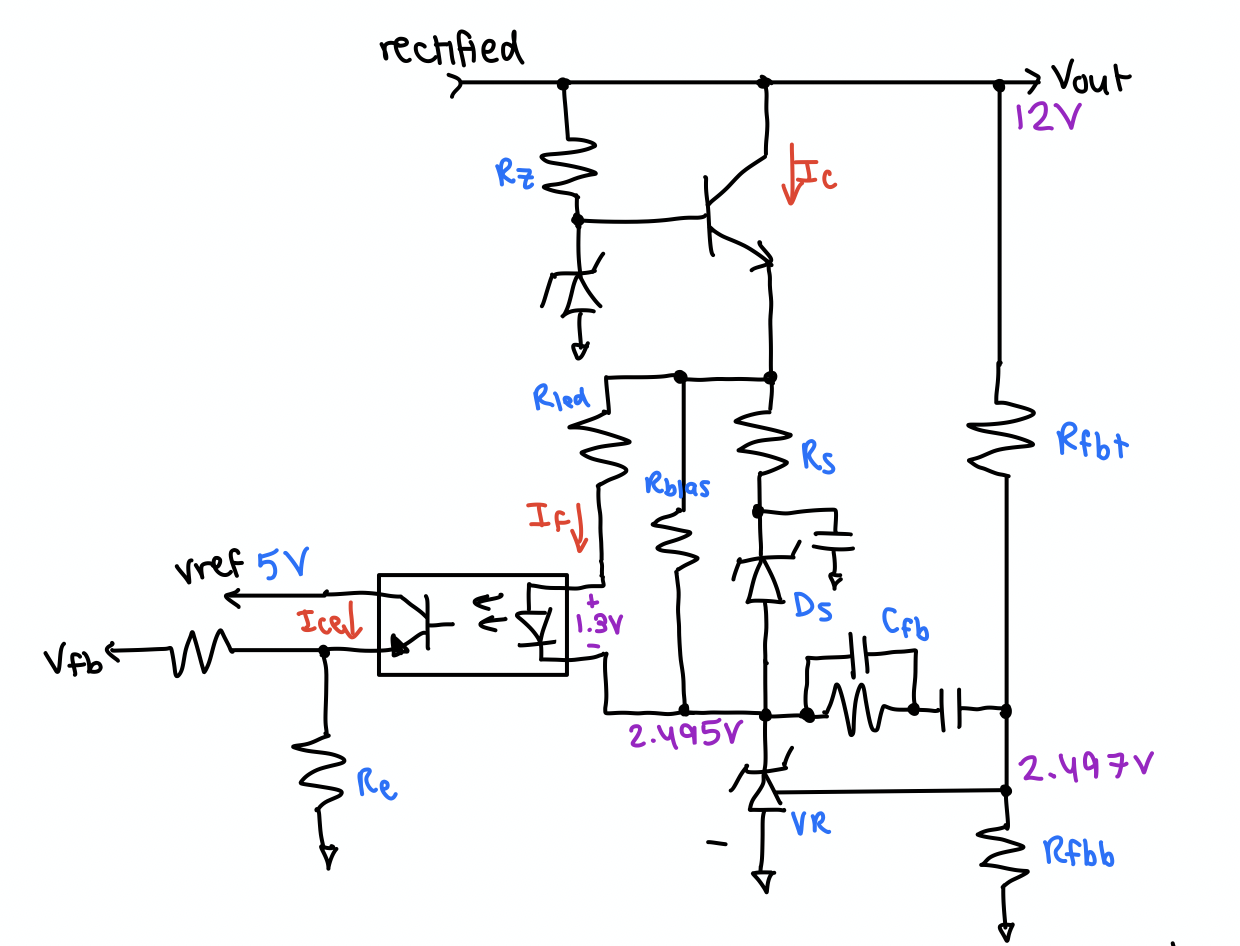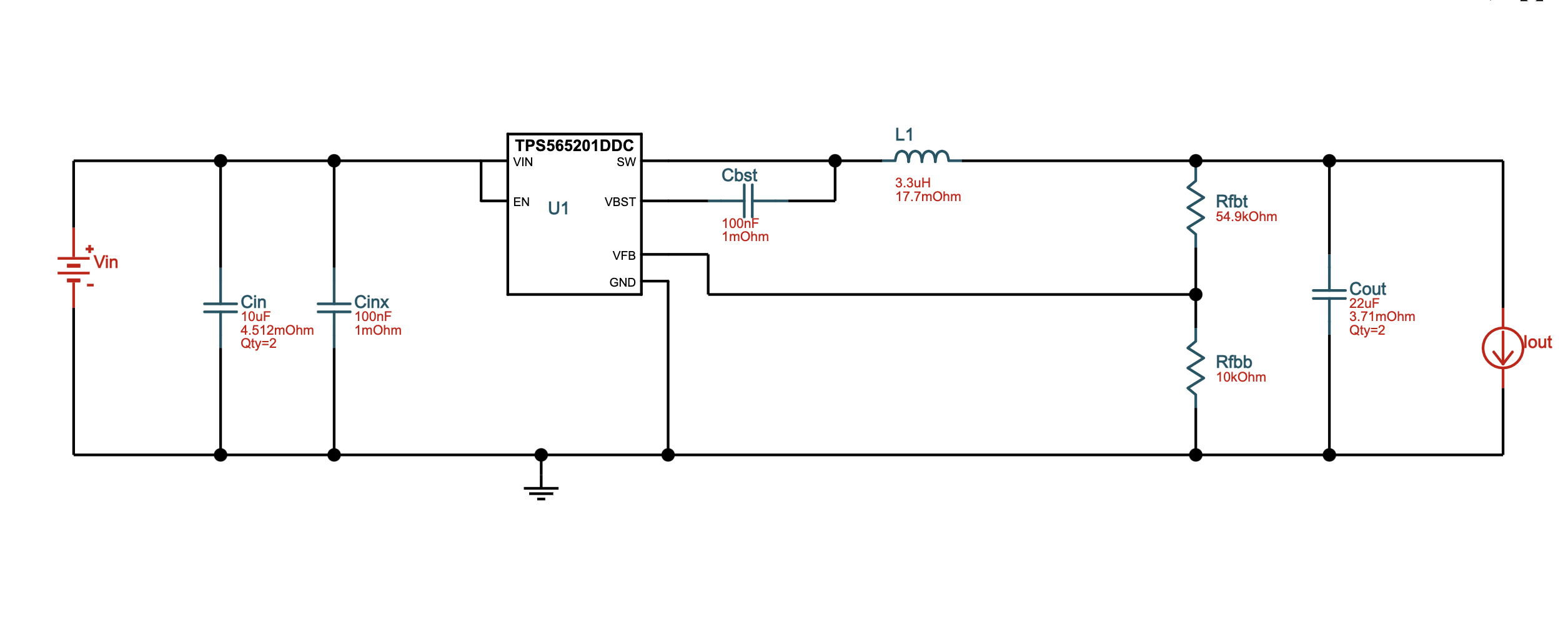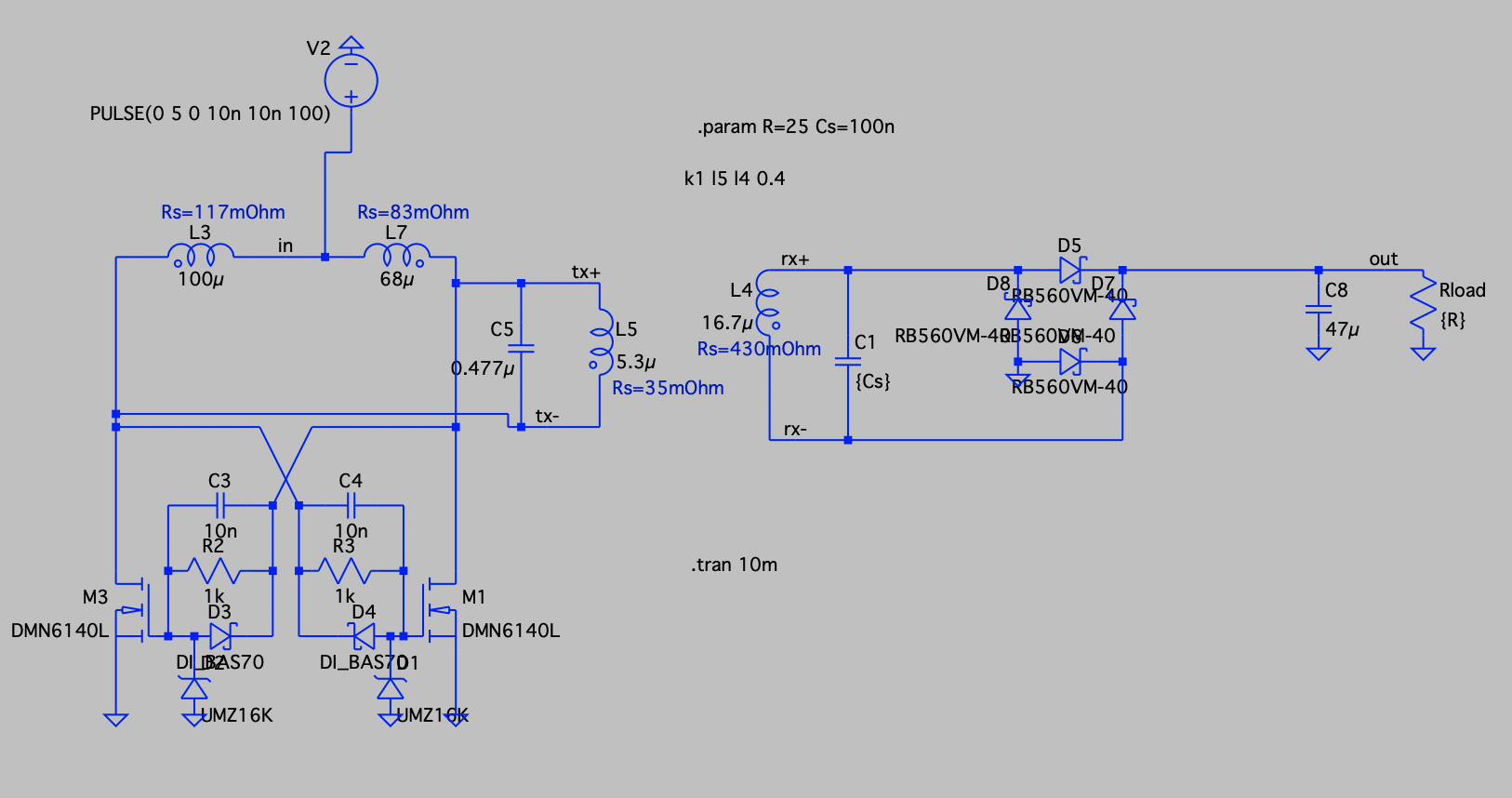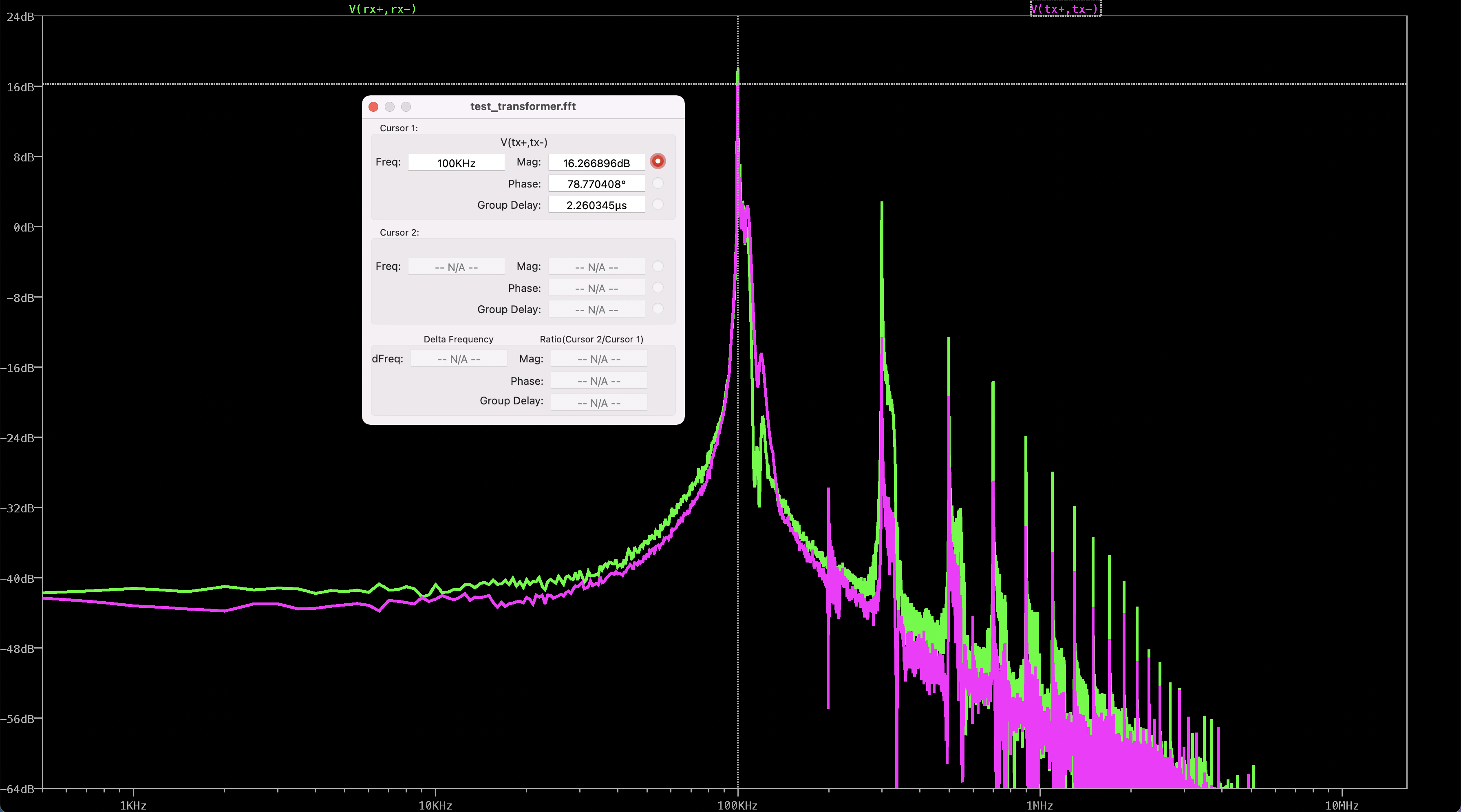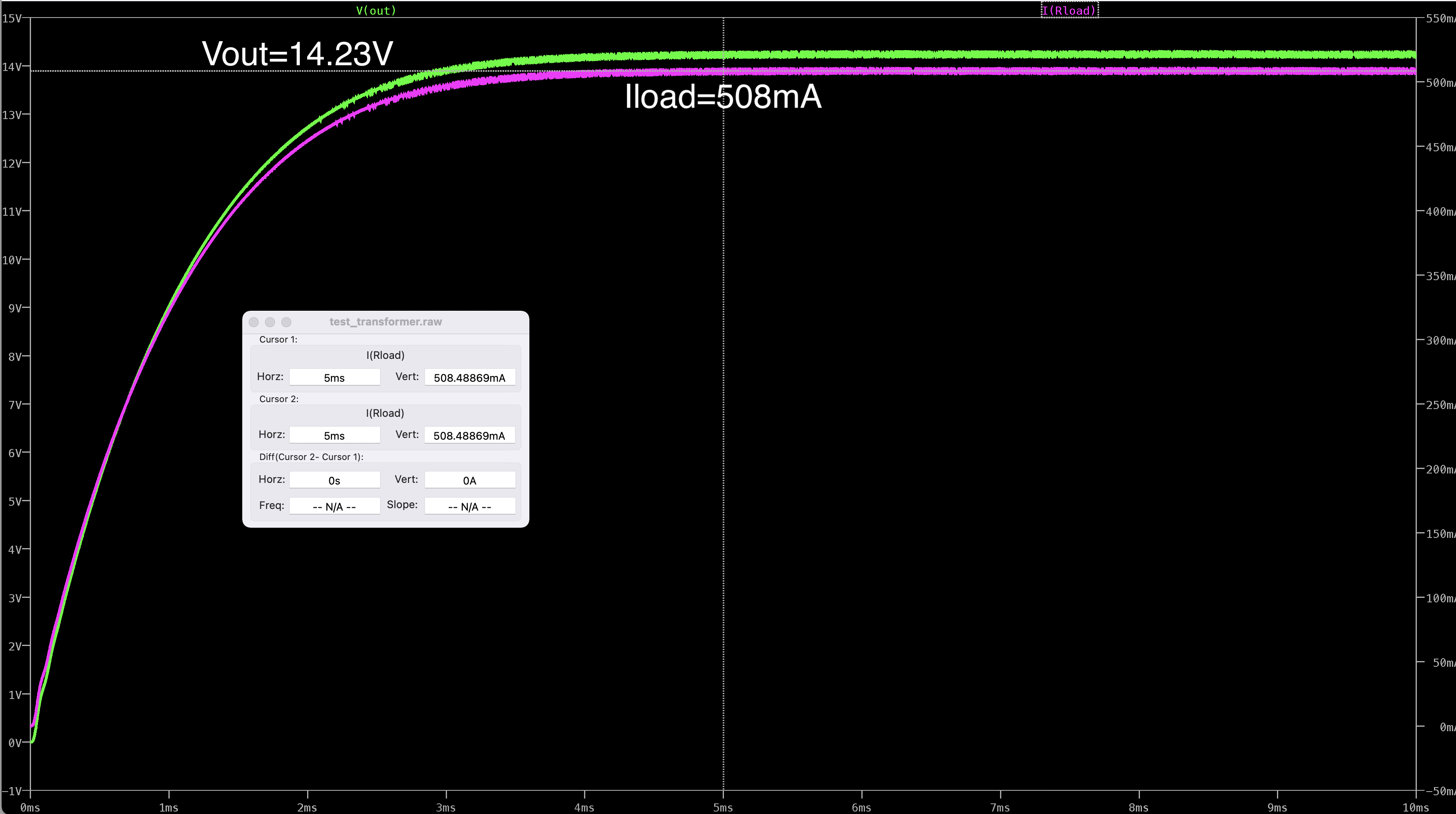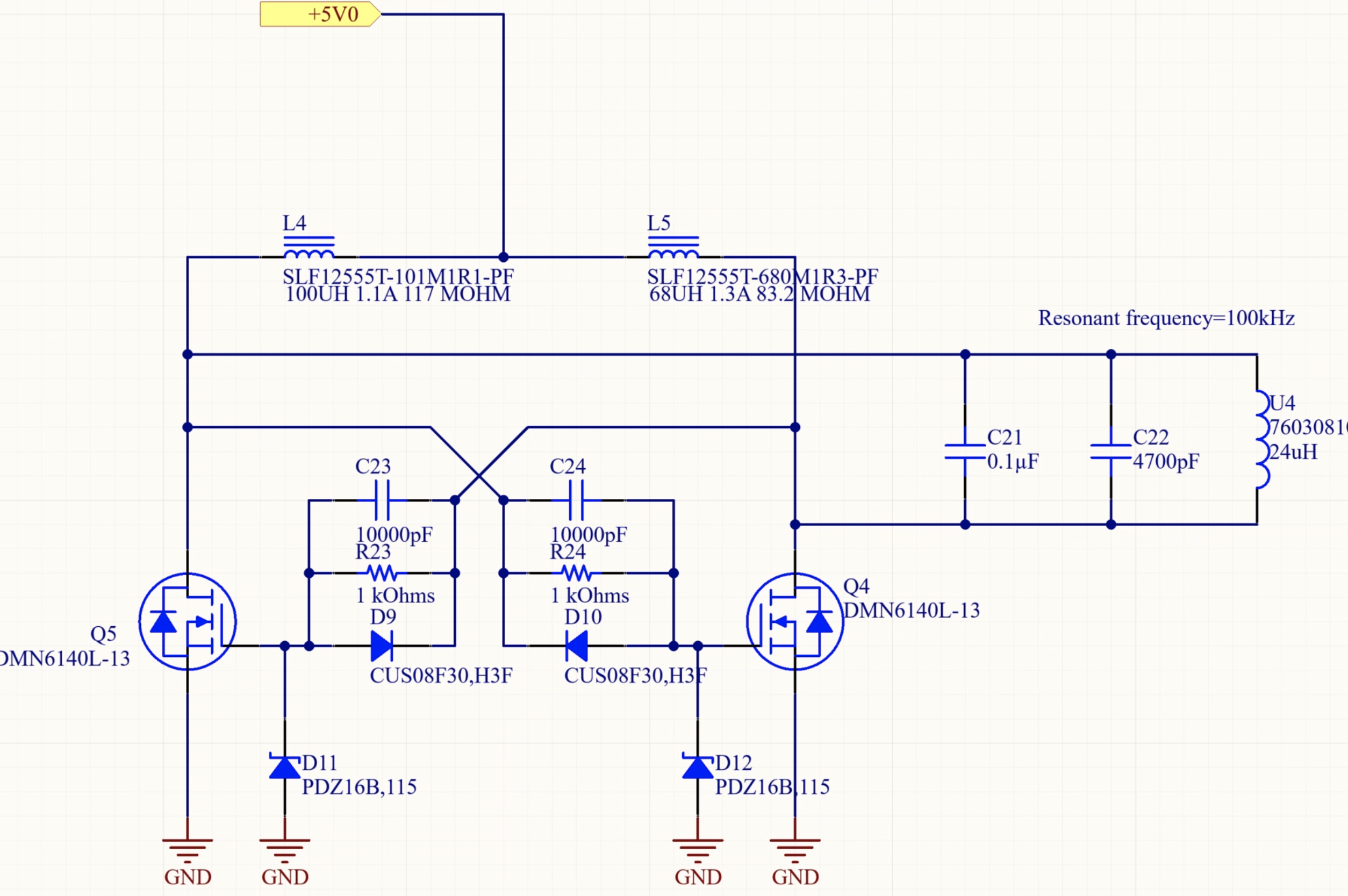—Inspiration
I have an old iPhone SE from 2015 and I feel left out from the simplicity and ease of wireless charging. I wanted to design a system so I could pretend like my phone has wireless charging.
To do this, I can mount the receiver to the back of my phone and connect the output to a wired charging cable. My design is spec'ed to allow 500mA charging at 5V.
Power flow diagram for inductive charger:

I designed each block independently, and worked backwards from load to specify power requirements and tune/bias circuits.




